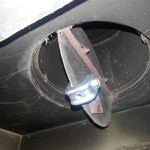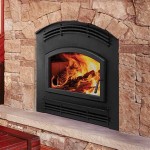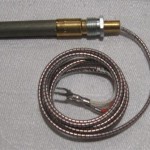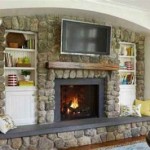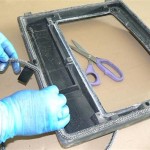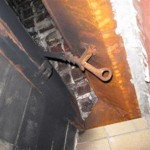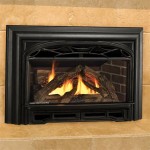Fireplace Inserts: A Comprehensive Guide to Wood Pellet Models
Fireplace inserts represent a practical and efficient solution for homeowners seeking to enhance the functionality and heating capabilities of their existing fireplaces. Among the various types of fireplace inserts available, wood pellet models stand out as an environmentally conscious and cost-effective option. This article provides a detailed examination of wood pellet fireplace inserts, including their mechanics, benefits, installation considerations, and maintenance requirements.
A fireplace insert is essentially a self-contained heating unit that is designed to fit into the opening of an existing masonry or prefabricated fireplace. Unlike traditional open fireplaces, which are notoriously inefficient, fireplace inserts are engineered to maximize heat output and minimize heat loss. They achieve this through a closed combustion system and the use of materials that effectively radiate heat into the room.
Wood pellet fireplace inserts, specifically, burn compressed wood pellets made from recycled wood waste. These pellets offer a consistent fuel source with a low moisture content, resulting in cleaner and more efficient burning compared to traditional firewood. The burning process is typically automated, with a feed system that delivers pellets from a hopper into the firebox. This allows for precise control over the heat output and burn time.
Understanding the Mechanics of Wood Pellet Fireplace Inserts
The operation of a wood pellet fireplace insert involves a series of interconnected processes that ensure efficient and controlled combustion. The key components of a typical wood pellet insert include the hopper, auger system, firebox, combustion blower, exhaust system, and control panel.
The hopper is the storage container for the wood pellets. Its size varies depending on the model and is a factor in determining how frequently the insert needs to be refilled. Pellets are gravity-fed from the hopper into the auger system.
The auger system consists of a motorized screw that transports pellets from the hopper to the firebox. The speed of the auger is regulated by the control panel, which allows the user to adjust the feed rate and, consequently, the heat output. Some models feature automatic modulation, where the auger speed is automatically adjusted based on the room temperature.
The firebox is where the combustion process takes place. It is constructed of heat-resistant materials, such as cast iron or steel, and is designed to withstand the high temperatures generated during burning. The firebox is equipped with an igniter, typically an electric heating element, that initiates the combustion process. Once the pellets are ignited, the combustion blower provides the necessary airflow to sustain the fire. The airflow is crucial for efficient burning and minimizing smoke production.
The combustion blower forces air into the firebox, providing oxygen for the combustion process and directing the hot air into the room. Some models feature a convection blower that further circulates the heated air throughout the room, enhancing heat distribution.
The exhaust system is responsible for venting the combustion gases outside the home. Wood pellet inserts typically require a dedicated vent pipe, usually made of stainless steel, that runs either through the existing chimney or directly through an exterior wall. Proper venting is essential for safe and efficient operation.
The control panel allows the user to manage the various functions of the insert, including turning it on and off, adjusting the heat output, and setting a thermostat. Modern models often incorporate advanced features such as programmable timers and remote controls.
The Advantages of Wood Pellet Fireplace Inserts
Wood pellet fireplace inserts offer several distinct advantages over traditional open fireplaces and other heating alternatives. These advantages include improved heating efficiency, environmental benefits, ease of use, and cost-effectiveness.
Heating efficiency is a primary benefit. Traditional open fireplaces are notoriously inefficient, with most of the heat escaping up the chimney. Wood pellet inserts, on the other hand, are designed to maximize heat output. They typically have an efficiency rating of 75% or higher, meaning that a significant portion of the energy released from burning the pellets is converted into usable heat. This translates to lower heating costs and a more comfortable living environment.
Environmental benefits stem from the use of wood pellets as a fuel source. Wood pellets are a renewable resource, made from recycled wood waste that would otherwise be discarded. Burning wood pellets produces significantly less smoke and particulate matter compared to traditional firewood, contributing to cleaner air quality. Many wood pellet inserts are EPA-certified, indicating that they meet stringent emission standards.
Ease of use is another key advantage. Wood pellet inserts are relatively easy to operate and maintain. The automated feed system eliminates the need for manually loading firewood, and the thermostat control allows for precise temperature regulation. Cleaning requirements are also minimal, typically involving occasional ash removal. Furthermore, wood pellets are readily available and easy to store.
Cost-effectiveness is dependent on several factors including the price of wood pellets in a specific region and the cost of alternative heating fuels. However, wood pellet inserts often prove to be a cost-effective heating solution in the long run. The higher efficiency translates to lower fuel consumption, and the stable price of wood pellets provides a predictable heating expense.
Installation and Maintenance Considerations
Proper installation and maintenance are crucial for ensuring the safe and efficient operation of a wood pellet fireplace insert. Installation should be performed by a qualified professional, while regular maintenance can be handled by the homeowner.
Installation involves several critical steps, including preparing the fireplace opening, installing the vent pipe, connecting the electrical supply, and testing the operation of the insert. The fireplace opening must be properly sized to accommodate the insert, and any necessary modifications should be made to ensure a secure fit. The vent pipe must be installed according to local building codes and manufacturer specifications to ensure proper venting of combustion gases. A dedicated electrical circuit is typically required to power the insert, and the connection should be made by a licensed electrician. Finally, the operation of the insert should be thoroughly tested to ensure that all functions are working correctly.
Maintenance involves regular cleaning and inspection of the insert. The ash should be removed from the firebox on a regular basis, typically after every few burns. The vent pipe should be inspected annually for any signs of blockage or corrosion, and it should be cleaned as needed. The combustion blower and auger system should also be inspected and cleaned periodically to ensure proper operation. Following the manufacturer's recommendations for maintenance will help to prolong the lifespan of the insert and maintain its efficiency.
Furthermore, it is important to have a carbon monoxide detector installed in the home, especially near the fireplace. Carbon monoxide is a colorless and odorless gas that can be produced during combustion, and exposure to high levels can be lethal. A carbon monoxide detector will provide an early warning of any potential problems, allowing occupants to evacuate the home and seek medical attention if necessary.
Choosing the correct size of insert is critical. Oversized inserts can cause a room to be uncomfortably warm, while undersized inserts may not provide sufficient heat. A heating professional can assess the size of the room and the insulation levels to determine the appropriate BTU (British Thermal Unit) output for the insert.
When purchasing wood pellets, it is important to choose a high-quality brand that is certified by the Pellet Fuels Institute (PFI). PFI-certified pellets have been tested to meet specific standards for ash content, moisture content, and heating value. Using low-quality pellets can result in increased ash buildup, reduced efficiency, and potential damage to the insert.
In conclusion, wood pellet fireplace inserts offer an efficient, environmentally friendly, and convenient heating solution for homeowners seeking to upgrade their existing fireplaces. By understanding the mechanics, benefits, installation considerations, and maintenance requirements of these inserts, homeowners can make informed decisions and enjoy the warmth and comfort they provide.

Pellet Fireplace Inserts Lopi Stoves Made In Usa

Pellet Fireplace Inserts Lopi Stoves Made In Usa

Wood Stoves Pellet Gas Fireplace Inserts

Pellet Fireplace Inserts Complete Home Concepts

Fireplace Insert Stoves Wood Gas Pellet Traditional Baltimore Maryland

Gci60 Cast Iron Pellet Stove Insert Regency

Pellet Burning Fireplace Inserts Sierra Hearth And Home

Fireplace Insert Installation Wood Inserts Gas Pellet And Electric

Pellet Fireplace Inserts Lopi Stoves Made In Usa

Wood Pellet Fireplace Inserts Martin S And Service Butler Pa
Related Posts

